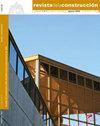用流变试验方法研究基沥青和SBS改性沥青的物理性能
IF 1.4
4区 工程技术
引用次数: 1
摘要
用各种改性剂对沥青进行改性,以减少由于交通荷载和气候影响而产生的柔性路面变形。聚合物改性,特别是苯乙烯-丁二烯-苯乙烯(SBS)共聚物改性是提高沥青物理性能的最常用方法之一。然而,聚合物改性沥青与原沥青相比表现出不同的流变性能。本文旨在通过最先进的测试方法,研究SBS共聚物对沥青热流变性能的影响。为此,采用小振幅振荡剪切试验(SAOS)、基于时间-温度叠加(TTS)原理构建主曲线、零剪切粘度测定(ZSV)和多次剪切蠕变恢复试验(MSCR)等流变学程序以及其他基础试验。SAOS试验结果表明SBS对沥青的粘弹性变形特性有积极的影响。复合黏度主曲线表明SBS改性剂降低了沥青的牛顿流动特性。不可恢复蠕变柔度的减小和恢复百分比的增加表明SBS改性剂显著提高了沥青在中高温柔性路面中作为粘结剂的适用性。本文章由计算机程序翻译,如有差异,请以英文原文为准。
Investigation of physical properties of base and SBS modified bitumens by rheological test methods
Bitumen is modified with various modifiers to diminish the deformation occurred in flexible pavements due to traffic loads and the effects of climate. Polymer modification and more specifically Styrene-Butadiene-Styrene (SBS) copolymer modification is one of the most common methods to enhance the physical properties of bitumen. However, the polymer modified bitumens could exhibit different rheological properties compared to original bitumen. In this work, it is aimed to investigate the effects of SBS copolymer on thermorheological properties of bitumen by means of state of art test methods. To this end, a rheological program including small amplitude oscillation shear test (SAOS), construction of master curves by using time-temperature superposition (TTS) principle, determination of zero shear viscosity (ZSV) and multiple shear creep recovery tests (MSCR) were employed along with other fundamental tests. SAOS test result signifies a positive effect of SBS on the viscoelastic deformation nature of bitumen. The master curves of the complex viscosity of binders reveal that SBS modifier reduced the Newtonian flow properties of bitumen. The decrements in non-recoverable creep compliance and the increment in percent recovery signify that SBS modifier has dramatically enhanced the applicability of bitumen as a binder in flexible pavement at mid to high-temperature ranges.
求助全文
通过发布文献求助,成功后即可免费获取论文全文。
去求助
来源期刊

Revista de la Construccion
工程技术-工程:土木
CiteScore
2.30
自引率
21.40%
发文量
0
期刊介绍:
The Journal of Construction is aimed at professionals, constructors, academics, researchers, companies, architects, engineers, and anyone who wishes to expand and update their knowledge about construction. We therefore invite all researchers, academics, and professionals to send their contributions for assessment and possible publication in this journal. The publications are free of publication charges.
OBJECTIVES
The objectives of the Journal of Construction are:
1. To disseminate new knowledge in all areas related to construction (Building, Civil Works, Materials, Business, Education, etc.).
2. To provide professionals in the area with material for discussion to refresh and update their knowledge.
3. To disseminate new applied technologies in construction nationally and internationally.
4. To provide national and foreign academics with an internationally endorsed medium in which to share their knowledge and debate the topics raised.
 求助内容:
求助内容: 应助结果提醒方式:
应助结果提醒方式:


